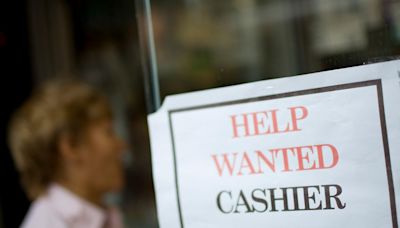Search results
See the daily level of the federal funds rate back to 1954 and the current rate as of March 25, 2024. The federal funds rate is the interest rate at which banks lend to each other overnight and is influenced by the FOMC.
- 30 Year Fixed Mortgage Rate
Interest Rates. Economy. ... Interactive historical chart...
- 10 Year Treasury Rate
10 Year Treasury Rate - 54 Year Historical Chart....
- 1 Year LIBOR Rate - Historical Chart
The London Interbank Offered Rate is the average interest...
- 30 Year Fixed Mortgage Rate
- Understanding Fed Interest Rate Decisions
- Fed Rate Hikes 2022-2023: Taming Inflation
- 2020 Fed Rate Cuts: Coping with Covid-19
- 2019 Fed Rate Cuts: Mid-Cycle Adjustment
- Fed Rate Hikes 2015-2018: Returning to Normalcy
- 2008 Fed Rate Cuts: The Great Recession
- Fed Rate Cuts 2007-2008: The Housing Market Crash
- Fed Rate Hikes 2005-2006: The Housing Market Boom
- Fed Rate Cuts 2002-2003: Flagging Recovery, Low Inflation
- 2001 Fed Rate Cuts: The Dot-Com Bust and 9/11
- GeneratedCaptionsTabForHeroSec
The Federal Reserveadjusts the federal funds target rate range in response to what’s happening in the economy. Adjusting rates helps the Fed achieve conditions that satisfy their dual mandate: Keep prices stable and maximize employment. Here’s how that works: The Fed raises interest rates when the economy starts overheating—too much inflation—and c...
It’s easy to forget that the Fed was holding the federal funds rate at around zero as recently as the first quarter of 2022. The Fed was also still buying billions of dollars of bonds every month to stimulate the economy. All despite 40-year highs in various measures of U.S. inflation. Once the Fed decided it was time to do something about inflatio...
“Information received since the Federal Open Market Committee (FOMC) met in December indicates that the labor market remains strong and that economic activity has been rising at a moderate rate.” So began the FOMC’s policy statement on Jan. 29, 2020, just a few days before the U.S. economy plunged into the Covid-19 recession. Within weeks, the Covi...
The Fed cut interest rates by a quarter of a percentage point three times in 2019 in what Powell called a “mid-cycle adjustment.” In plain English, the Fed was easing rates midway through the typical expansion-to-recession business cycle. In 2019, the U.S. and Chinese were in conflict over trade—a so-called “trade war”—and the Fed was concerned tha...
In late 2008, the Fed slashed rates to zero in an unprecedented attempt to help the U.S. economy cope with the fallout from the 2008 global financial crisis. Seven years later, the central bank began gingerly raising rates as the economy recovered gradually. The first rate increase was in December 2015, under former Fed Chair Janet Yellen, who now ...
The Great Recession officially began in December 2007 and lasted until June 2009. But the Fed paused rate cuts between April 2008 and October 2008, as the global financial crisis deepened. American families saw their home values collapse, and the stock marketdidn’t reach its bottom until early 2009. The unemployment rate grew from 5% in December 20...
The Fed completed its 2005-2006 campaign for rate hikes in June 2006. By early 2007, the housing bubble was bursting and the unemployment rate started to rise. With the economy ailing, the FOMC started reducing rates in September 2007, eventually slashing rates by 2.75 percentage points in less than a year. “The substantial easing of monetary polic...
After the dot-com recession of the early 2000s, the U.S. economy recovered quickly. The Fed had cut rates in mid-2003, putting the fed funds target rate at 1%. That easy money helped GDP expand from +1.7% in 2001 to +3.9% in 2004—and by 2005, people were already talking about a bubble in U.S. housing markets. “Right now, price relative to rent, pri...
The dot-com recession lasted from March to November 2001. But the Fed was worried that the economic recovery was anemic, with measures of consumer confidence hitting nine-year lows. The FOMC dropped a 50 bps rate cut on the economy in November 2002, citing “greater uncertainty” and “geopolitical risks.” Markets were somewhat puzzled by the decision...
After the dot-com bubble of the late 1990s and 2000 came the dot-com bust of 2001. The frenzy of irrational exuberance saw massive amounts of money flow into ever less viable dot-com investments, leading to an inevitable stock market crash. The Nasdaq Composite peaked in February 2000 but wouldn’t bottom out until September 2002. Along the way, the...
A guide to the course of the federal funds rate and the Federal Reserve's monetary policy decisions over the last 30 years, with data, narratives and analysis. Learn how the Fed adjusts interest rates to stabilize the economy and respond to different economic conditions, such as inflation, recession and crisis.
2 days ago · View the monthly data of the federal funds effective rate, the interest rate at which banks trade balances held at Federal Reserve Banks overnight. Learn how the Federal Reserve influences this rate through open market operations and monetary policy.
4 days ago · For additional historical federal funds rate data, please see Daily Federal Funds Rate from 1928-1954 . The federal funds market consists of domestic unsecured borrowings in U.S. dollars by depository institutions from other depository institutions and certain other entities, primarily government-sponsored enterprises.
Feb 26, 2024 · The fed funds rate is set at a range, which is currently between 5.25% and 5.50%. How does the federal funds rate work? The federal funds rate determines how expensive it is to borrow...
People also ask
What is the current federal funds rate?
How many times has the Fed lifted interest rates?
When did the Fed raise interest rates?
When did the Fed Funds rate start?
Apr 18, 2024 · Graph and download revisions to economic data for from 1954-07-01 to 2024-04-18 about funds, federal, interest rate, interest, rate, and USA.




